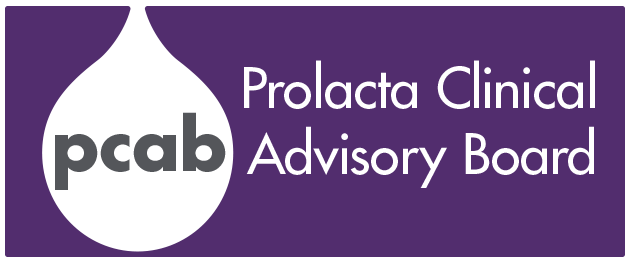Clinical support
Supporting healthcare professionals
More than just reliably delivering nutritional products, we’re also your clinical partner. This is why we’re always working to advance the understanding and add to the growing body of clinical evidence around human milk. We’re here with medical, clinical, economic, and research support.
Prolacta’s feeding protocols
Start premature and critically ill infants on track for healthy growth and improved outcomes.
We're proud to support you and your hospital with a new, evidence-based resource to help address the nutritional risks facing low birth weight premature infants. Prolacta’s Exclusive Human Milk Diet (EHMD) ProtocolTM and Surgifort Fortifier Clinical Study Feeding Protocol provide1 flexible, clinically proven guidance on using Prolacta’s human milk–based nutritional products.
For a copy of Prolacta’s Protocols, contact your representative.
Getting the most out of an EHMD
Talk to our clinical experts

Prolacta Clinical Advisory Board (PCAB)
We are a group of multidisciplinary, independent clinicians who are passionate about human milk science and nutrition. After witnessing first-hand the improved patient outcomes of an Exclusive Human Milk Diet (EHMD) with our patients, we work to enhance clinical practice, education, and outcomes for preterm and critically ill infants by sharing clinical expertise and emerging research.
Email: pcab@prolacta.com
Safely helping premature infants grow
A growing body of clinical evidence supports the use of an EHMD, including Prolacta’s 100% human milk–based fortifiers, as a new standard of care for premature infants born weighing ≤1250 g 2,3,4,5 and term infants following corrective surgery for gastroschisis.1
Preterm use
Enhanced protocols with earlier fortification using Prolacta’s fortifiers have been associated with achieving adequate growth,4,6,7 improved lung health,3,4 a lower risk of complications,8,9,10 reduced healthcare costs,2,11 and shorter NICU stays2 for infants receiving an EHMD.
A study by lead author Robert Huston, MD, published in the Journal of Neonatal-Perinatal Medicine,4 found that fortification with Prolacta’s 100% human milk–based fortifiers in the first days of life improves growth and reduces the risk of BPD by 15% for infants receiving an EHMD, without the increased risk of complications seen with cow milk–based fortifiers.
The Huston et al (2020) early fortification study provides further data to support the practice of fortifying the human milk feedings of infants born at <1250 g birth weight with a 100% human milk–based fortifier at a lower feeding volume (<60 mL/kg/day) than has been a standard feeding practice in the past.
Term use
In a case series of term infants recovering from gastroschisis repair who received Surgifort, improvements in growth velocity and reduced time to full feeds were observed.1
